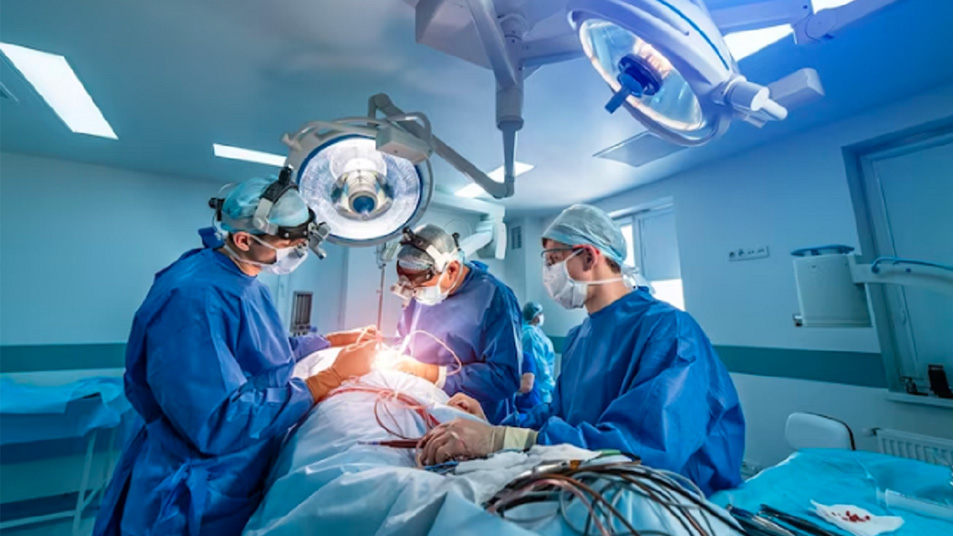
Laparoscopy Surgeries, Laparoscopy Doctors in Chiplun
The Surgeon performs a minimally invasive technique called a Laparoscopy to check for issues in the pelvis or stomach. They use Laparoscope, a device comprising of a telescopic rod with a video camera on the end. The laparoscope is inserted by the surgeon through a half-inch-or less incision made in the abdomen. To examine all of the organs in the abdomen and detect any issues, surgeons may need to create up to three further incisions in order to introduce additional surgical equipment.
Real-time images of patients belly or pelvis are shown onto a display by the laparoscope camera. Surgeons can monitor their hand movements during the surgery by using these photographs.
In case the diagnostic procedures are unable to determine the underlying cause of your ailment, the physician may suggest a Laparoscopy which is another tool used by medical professionals to take tissue samples (biopsies) for analysis.
A surgeon could decide to utilize a certain kind of port, one big enough to fit a hand in some circumstances. Laparoscopy that uses a hand port is referred to as "Hand Assisted" laparoscopy. Though often less than that needed for conventional surgery, the incision needed for the hand port is bigger than the other laparoscopic incisions.
Advantages of Laparoscopic Surgery :
Laparoscopic surgery, also known as minimally invasive surgery, offers several advantages over traditional open surgery. Here are some of the key benefits:
Compared to open surgery, Laparoscopic surgery, commonly referred to as minimally invasive surgery, has a number of benefits.
Here are a few of the main advantages :
1. Smaller Incisions : Compared to conventional surgery, which requires bigger incisions, laparoscopic surgery often requires smaller incisions, usually 0.5 to 1.5 cm. Less scarring and improved esthetic outcomes follow from this.
2. Reduced Pain : The patient usually has less pain and suffering following surgery when smaller incisions are made. Additionally, this may lessen the need for painkillers following surgery.
3. Shorter Hospital Stay : Hospital stays for patients undergoing laparoscopic surgery are frequently shorter. Patients can often return home the same day or in a day or two after the procedure, as opposed to many days following open surgery.
4. Faster Recovery : Patients often heal more quickly and can resume regular activities sooner since there are fewer incisions and less physical damage to the body.
5. Lower Risk of Infection : Minimal incision sizes lower the chance of infection by shielding internal organs from outside impurities.
6. Less Blood Loss : Less blood is lost during surgery when using minimally invasive procedures, which lowers the need for blood transfusions.
7. Improved Precision : A laparoscope, a camera that magnifies the operative region, and specialized equipment are used in laparoscopic surgery. This enables surgeons to maneuver with control and precision.
8. Better Outcomes : Numerous studies have demonstrated that laparoscopic surgery can result in improved clinical results, including a decreased risk of postoperative hernias and fewer sequelae.
9. Reduced Adhesions : With laparoscopic surgery, adhesions bands of scar tissue that can cause organs to adhere together are less prevalent than with open surgery.
10. Enhanced Visualization : Utilizing a high-definition camera can help surgeons see the surgical site more clearly, which can increase operation accuracy and efficacy.
Types of Operations performed using Laparoscopic Surgery :
Traditional surgeries best suited for laparoscopic surgeries include :
Removal of Stone, Cyst, fibroid and polyp.
Removal of Small tumors.
Biopsies.
Tubal ligation and reversal.
Removal of Ectopic pregnancy.
Surgery of Endometriosis.
Reconstruction surgery of Urethral and vagina.
Orchiopexy (testicle correction surgery).
Rectopexy (rectal prolapse repair).
Surgery of Hernia repair.
Esophageal anti-reflux surgery (fundoplication).
Gastric bypass surgery.
Cholecystectomy (gallbladder removal) for gallstones.
Appendectomy (appendix removal).
Guidelines before Laparoscopic Surgery :
A patient must follow these guidelines before the procedure or surgery :
On the day before the procedure or operation, avoid eating, drinking (including water), and smoking after midnight.
Select a loose-fitting attire as the patient may face some cramping and soreness in the abdomen.
On the day of operation, wear shoes with short heels. Because of the anesthetic, the patient may feel sleepy and wobbly.
Take off all jewelry.
Prior to the process, remove any nail polish.
Procedure of Laparoscopic Surgery :
General anesthesia is a medication used by the anesthesiologist to relax the patient and not experience pain during surgery.
The surgeon will make a little incision beneath the rib cage or close to the belly button. To fill the stomach with gas, they will introduce a gas tube into this incision. The organs will be easier to spot on the monitor if the patient pump the gas into the affected region.
The surgeon inserts the laparoscope after withdrawing the gas tube. To get tissue samples or carry out surgeries, they could make small incisions nearby and introduce surgical equipment.
After the surgery, the surgeon will seal the wounds and release the gas from patients body.
Generally, a diagnostic laparoscopy takes thirty to sixty minutes. Depending on the complexity of the issue it may also take one to three hours during laparoscopic surgery, The surgeon might have to convert to a more extensive open surgery if doing the treatment laparoscopically is not safe.
Recovery Tips to follow after Laparoscopic Surgery :
After you get home from laparoscopic surgery, you’ll want to take it easy for at least a day or two. You should follow these steps :
After the laparoscopic surgery, the patient must take at least few days rest after returning home. They must do the following actions:
After surgery, refrain from consuming alcohol for at least 24 hours.
Make sure the wounds are dry and clean.
Pay attention to the bathing instructions provided by the healthcare practitioner.
The morning following the procedure, patient can take off the bandage. After surgery, Steri-Strips TM, which resemble tape, can be taken out two to three days later.
If there's adhesive on your incisions, let it stay there until it comes off. After a shower, pat dry.
Don't panic if the urine (pee) is green. The surgeon may have checked to see if the fallopian tubes are open using a blue dye.
It can take several days for you to be able to defecate regularly.
After surgery, and before resuming the office after three days make sure to consult the doctor first. Please request a letter from the doctor excused from work if patient require one at their preoperative visit.
Call the healthcare provider right away if patient have any of these symptoms :
Fever or chills.
Redness or swelling around your incisions.
Abnormal discharge or bleeding.
Vomiting.
Problems urinating.
